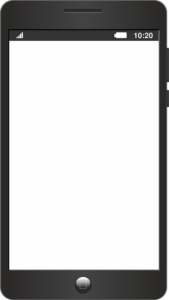
Many touchscreens rely on capacitive sensing to detect touch commands. Even if you’re unfamiliar with the technology, you’ve probably used one of these touchscreens before. Known as capacitive touchscreens, they’ve become the world’s most popular type of touchscreens. It’s estimated that over nine in 10 touchscreens use capacitive sensing to detect touch commands. For a better understanding of capacitive sensing and how it works, keep reading.
What Is Capacitive Sensing?
Capacitive sensing is exactly what it sounds like: the ability to detect changes in capacitance. It’s the fundamental technology behind capacitive touchscreens. Capacitive touchscreens receive their namesake from their ability to detect changes in capacitance. They leverage “capacitive sensing” to determine when and where touch commands occur.
How Capacitive Sensing Works
You might be wondering how capacitive sensing works exactly. All capacitive touchscreens feature a sensor that’s constantly measuring the capacitance of the display interface. The display interface is the layer that you touch to perform commands. When you turn on a capacitive touchscreen, it will generate a uniform electrostatic field across the display interface.
By default, the electrostatic field is uniform. Touching the display interface, however, will absorb some of it. The human body is electrically conductive. When you touch something that has a charge, your body will absorb some of the charge. Capacitive touchscreens, of course, have a charge — the electrostatic field over the display interface. Upon touching it, the “capacitance” of the electrostatic field will change.
Capacitive Sensing: Things to Keep in Mind
Capacitive sensing requires the use of a conductive object. In other words, you can’t perform touch commands on a capacitive touchscreen with a nonconductive object. Most styluses aren’t conductive. They consist of pen-like objects that are made of plastic. And because they aren’t conductive, you can’t use styluses to control a capacitive touchscreen.
The only exception is capacitive styluses. Capacitive styluses are special styluses that are designed for capacitive touchscreens. They look like ordinary plastic styluses, but they have a conductive tip that mimics the properties of the human body.
Capacitive sensing is more responsive to touch commands than pressure-based touchscreen sensing technologies. You don’t have to press down forecefully when performing touch commands. As long as your finger is touching the display interface, it will absorb some of the touchsceeens’ electrostatic field. Therefore, the capacitive touchscreen will register your touch command.
